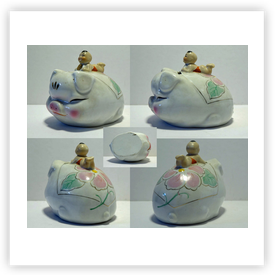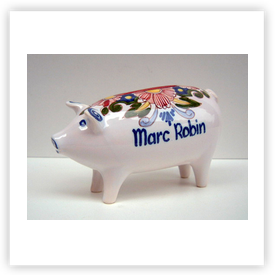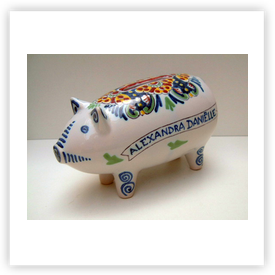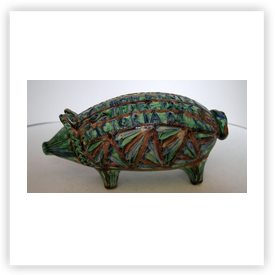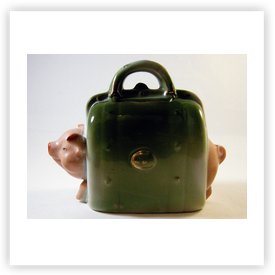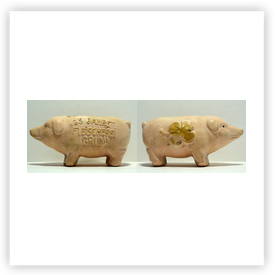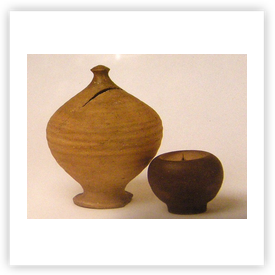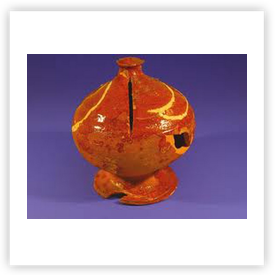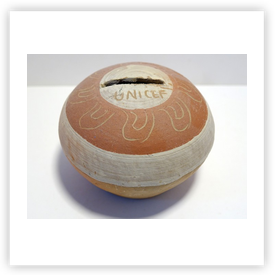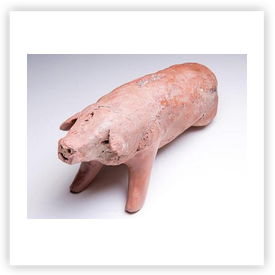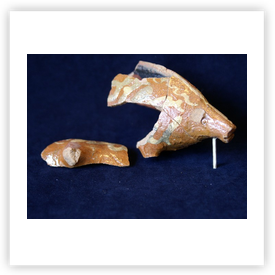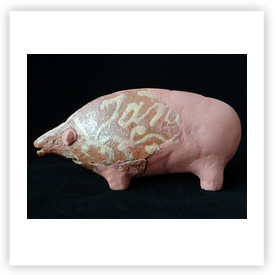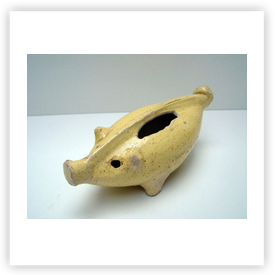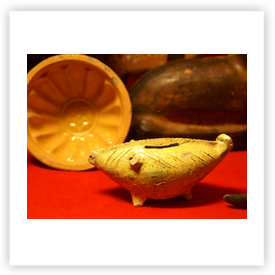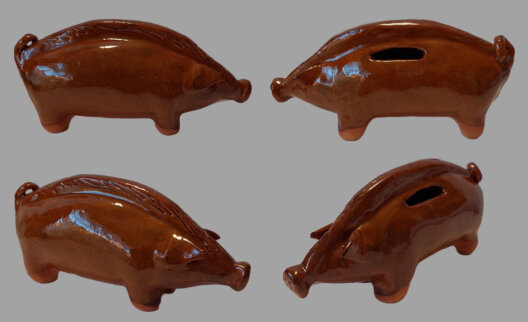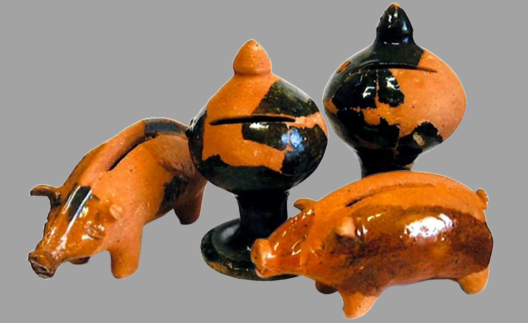History
Information

The pig brings luck or fortune
For the association with luck or fortune there is historic proof: - On the year markets in the middle ages it was custom to honour the winner of games and to give a piglet to the loser. Causing joy and laughter with the bystanders, but it was good fortune for the loser.
- In German speaking countries it was custom until the 19th century to give apprentices (youngsters who were sent out to become a craftsman) a piglet as reward for a full years learning and labour.
- It is custom in German speaking countries to give each other a small marzipan pig or piggy bank (in the shape of a pig) for New Year as a token of luck.
- There are various legends of Saint Anthony the Great (17th January) with pigs. His nick name is "Anthony with the pig".
- In ancient Egypt on New Year’s day an amulet in the shape of a sow (a symbol of fertility, prosperity and good luck) was presented to a woman.
- In the northern counties of The Netherlands (Friesland, Groningen) it is still custom that someone from the closest family circle gives a new born baby a piggy bank, as a token for prosperity and good luck. Stuffed with money this is the base for the baby’s “fortune”. The institutional Saving Banks in the Western Society followed that custom (also for their own benefit): children were offered a piggy bank (any shape) for opening a savings account. This was popular between 1950 and 1980. Since the introduction of internet banking this tradition is (sadly) completely lost!
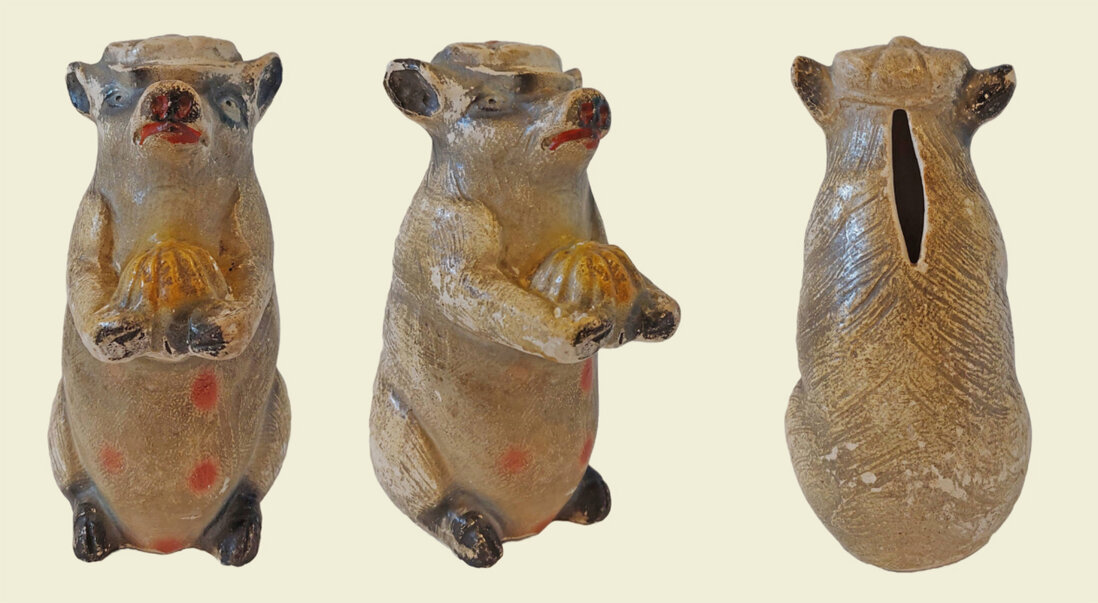
French piggy bank from the period 1875-1925, 18 cm high. With a pumpkin. The pumpkin is seen as a symbol of luck and prosperity and to keep negative energy away. It is one of the great symbols of autumn and is associated with creativity and insight.
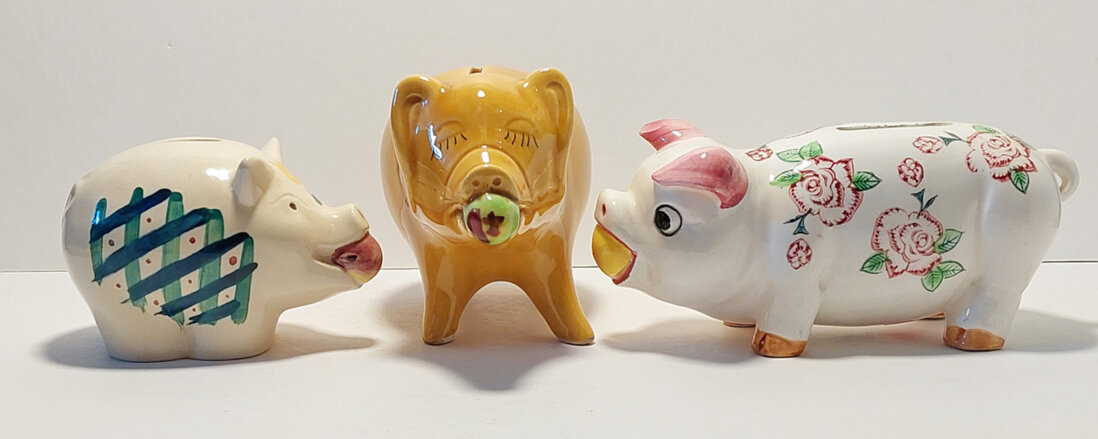
3 piggy banks that bring luck with an apple in their mouths. The apple tree was often seen as one of the most sacred trees in ancient mythology. It often symbolizes good health and future happiness. It is therefore also used as a birth tree, where an apple tree is planted at the birth of a child.
Left: Sweden. Gustavsberg, period 1939-1944. Length 12 cm. Middle: VALLAURIS, creation A. Ferlay. South-east France, Côte d'Azur. Length 18 cm. Right: Japan for export to England. Sakura flowers symbolize happiness, love, spring and most importantly new beginnings. Length 18 cm. ± 1914.
Left: Sweden. Gustavsberg, period 1939-1944. Length 12 cm. Middle: VALLAURIS, creation A. Ferlay. South-east France, Côte d'Azur. Length 18 cm. Right: Japan for export to England. Sakura flowers symbolize happiness, love, spring and most importantly new beginnings. Length 18 cm. ± 1914.

Basic shape and the oldest pig piggy bank
- The basic shape of a penny bank was the mother’s breast. In the ancient Greek culture this was a symbol of prosperity and fertility. This basic penny bank model was found in excavations all over Europe. Potters introduced this easy to produce shape in the Middle Ages (12-14th century).
- From medieval times on a large wooden heavy sacrifice coffin stood in the church porch. With a slot in which the faithful were expected to put their sacrifice, a donation in coins. These coffins were often found empty because others could not stay away with their sticky fingers. They put a glue stick (used in other occasions to catch singing birds) through the slot and coins remained on the stick.
- A similar method can also be applied to your piggy bank. Grab a large knife and insert it into the slot while you keep the piggy bank upside down. Shake a little and the coins will slide along the knife out of the pig. Don’t ever put paper money in your piggy bank. If you are able to get it out, it will mostly be in pieces.
- The oldest (13th century; amongst experts disputable!) European piggy bank was found in Billeben (Thüringen, Germany). Certain is that potters from the 17th century on produced clay money banks (also) in the shape of animals like a pig. Other craftsmen started to produce them in tin, metal, silver, etc. The industrial production of ceramic piggy banks, with moulds, started approximately in the middle of the 19th century.
- In the early centuries people did indeed break their piggy banks and threw the fragments in the cess pool. To find out what form an early piggy bank has, research on fragments is helpful.
The medieval pig was closer to the wild boar than the modern pig. These also no longer have a comb of bristly hair on the back. The Amersfoort piggy bank (here the replica, in my collection) does have such a pronounced crest on the back. Which also has to do with the production technique (folding/folding edge).
These 4 money boxes, from a waste pit during an excavation in 1984 on the corner of Kerkstraat and Muurhuizen in Amersfoort (NL), date from the late 16th century. Two of them are of the ‘mother's breast’ type and two are piggy banks. All four were broken and were glued and restored by the city archaeologists. Image © Center for Archaeology, Amersfoort.

Origin
Where ever earthenware or porcelain industry is, or has been, one can find piggy banks. In the Netherlands there are well known places like Gouda, Delft, Makkum. In France Quimper (Brittany), Limoges, Lunéville. In the UK one has to search in Staffordshire. That was the centre of potteries. But get your chance alsoin Scotland, Wales or Soutern England. Or visist the antique shops and antique markets, boot fairs, etc. In Germany one can try to find piggy banks in the Alsace or the former GDR. In Czechoslovakia I found many piggy banks about 20 years ago, nowadays they all are with stoppers! If you are visiting Thailand you can buy piggy banks in Chiang Mai for example. There are opportunities to find them in Mexico, Vietnam, Africa, South America and lots of them in the USA, etc. Where ever you are, visit the local souvenir shop, crockery shop, toy shop, charity shop.
Don’t search for piggy banks in countries where it is not custom to eat pork. Where a pig is an unclean animal, in principle you will not find any pig piggy bank.
Don’t search for piggy banks in countries where it is not custom to eat pork. Where a pig is an unclean animal, in principle you will not find any pig piggy bank.
